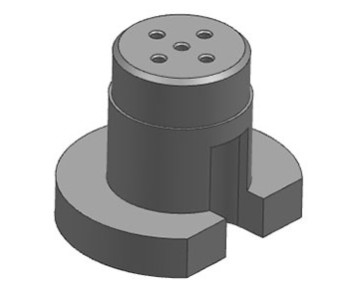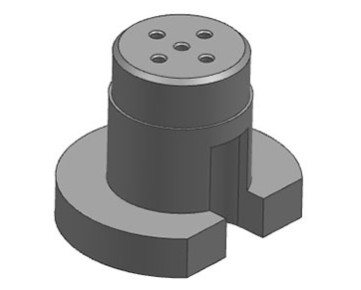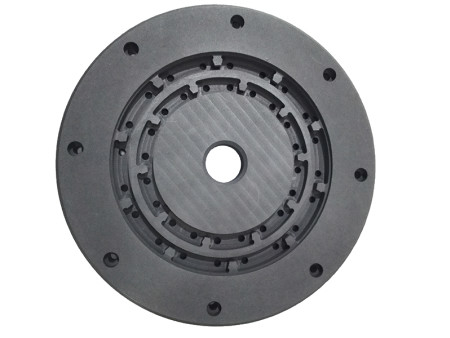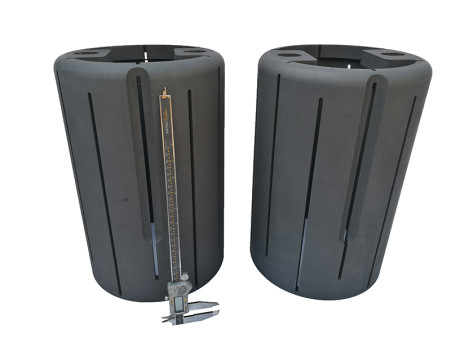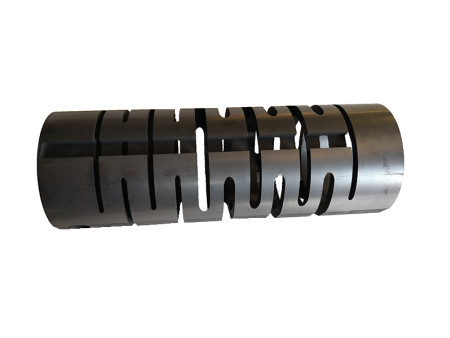-
Highlight
90Mpa Custom Graphite Molds
,25uom Custom Graphite Molds
,90Mpa Custom Casting Molds
-
TechniqueSintering Mold
-
Porosity (%)12% Max
-
Compressive Strength90Mpa
-
Grain Size10-25uom
-
MaterialsHigh Pure Graphite Materials
-
CompositionHigh Purity Carbon
-
Place of OriginChina
-
Brand NameSGI
-
CertificationISO , CE
-
Model NumberCustomized products without models
-
Minimum Order Quantity10pcs
-
Price10-100USD/1pcs
-
Packaging Detailsplastic packing in export standard woodbox
-
Delivery Time10-25 working day
-
Payment TermsT/T
-
Supply Ability1000pcs per day
High Purity Carbon 25uom 90Mpa Custom Graphite Molds
Graphite mold
- Working principle
Metal materials deform and become soft at high temperatures, while graphite has high hardness, good electrical conductivity, radiation protection, corrosion resistance, good thermal conductivity, low cost, and high temperature resistance. Graphite and metal have opposite properties when the temperature changes. The higher the temperature, the harder the physique will be, so there will be no problem of deformation. Therefore, the glass hot bending mold is made of graphite material, which can ensure the maximum precision, and the difficulty of mold processing is also reduced.
Graphite molds have better high temperature resistance, stable performance at high temperatures, good graphite lubricity, and molten metal is not easy to adhere to the mold during solidification. And it has the characteristics of good thermal conductivity, good wear resistance, and high mechanical strength. The molds are mostly used for continuous casting of copper and aluminum, platinum, gold, silver, other non-ferrous metals, steel, and stainless steel.
High-temperature pressurized industrial furnaces are high-temperature, pressurized, and sintered equipment commonly used in the powder metallurgy industry or industrial fields where products are produced by powder metallurgy processes. Graphite molds are an indispensable part of the production of high-temperature pressurized industrial furnaces. Graphite molds are often used in atmospheric industrial furnaces, such as the production of glass products and quartz products.
- Application
- Molds for glass forming
As the stone graphite material has chemical stability, is not easy to be infiltrated by molten glass, does not change the composition of the glass, the graphite material has good thermal shock resistance and small size change with temperature, so it has become indispensable in glass manufacturing in recent years. Mold material, it can be used to make glass tube, elbow, funnel and other various shaped glass bottles.
Sintering molds and other sintering molds and brackets that use artificial graphite materials to produce transistors with minimal thermal deformation are now widely used and have become indispensable materials for the development of the semiconductor industry.
- Metal casting graphite mold
Graphite material has the characteristics of high temperature resistance, suitable hardness and strength, non-wetting with most metals, easy demoulding, and good processability. It is often used to make graphite molds for metal casting. Graphite molds are widely used in different casting processes such as processing casting, atmospheric casting, centrifugal casting and so on.
- Hot-pressed graphite mold
The artificial graphite hot pressing mold used for the pressure sintering of cemented carbide has the following characteristics: First, if the pressing temperature is increased to 1350-1450 degrees, the required unit pressure can be reduced to 67-100 kgf/cm² (That is, 1/10 of the cold pressing pressure). Second, pressing and heating are carried out in the same process, and a dense sintered body can be obtained after a short time of sintering.

